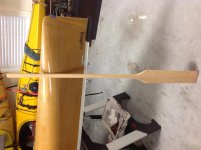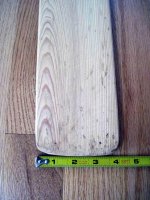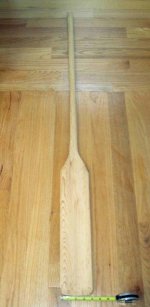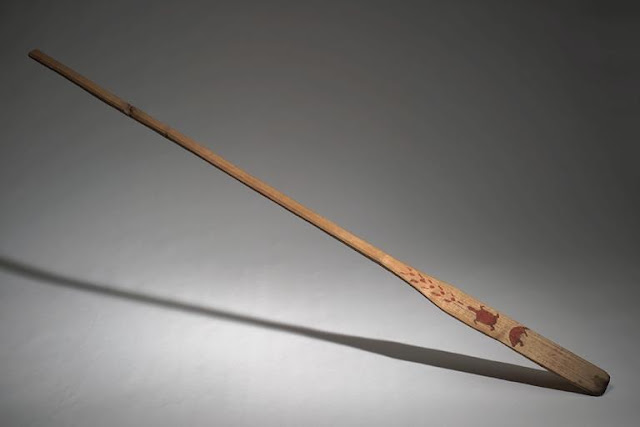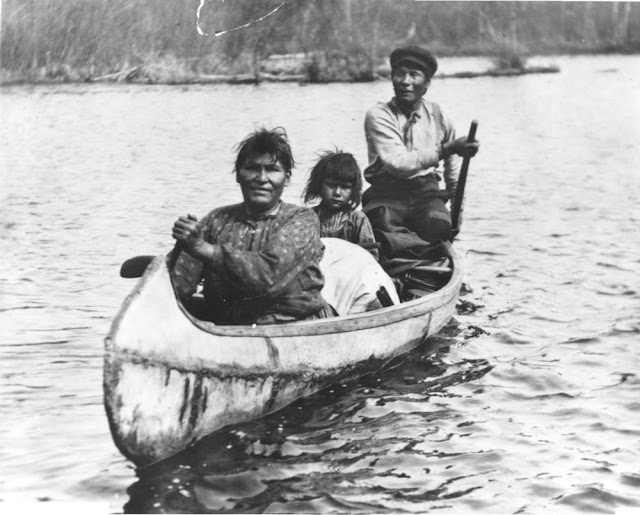Like memaquay, I have taken to bright finishing wood (both canoe trim and paddles) using a couple of coats of low viscosity epoxy (I use System Three Clear Coat) covered by about 3 coats or so of marine varnish. It seems to me to result in a more durable finish than varnish alone, and yields a cosmetic result equivalent to using 6 or 7 coats of varnish.
I agree with yellowcanoe that oil finishes are not very durable. I have used a wide variety of "penetrating oils" on the gunwales of my whitewater canoes, on which a bright finish would likely get quickly scratched up, and found that they really don't penetrate much at all. After one or two runs the gunwales have bare spots where my hand has rubbed against the rail.
It has been said that varnished finishes on paddle grips and shafts are more likely to raise blisters. I have never found it to be so, but lately I have been experimenting with oiling the grips of a couple of flat water paddles and I agree that it has a nicer feel. I have left the shafts varnished, however.
If you want to use this oar as a paddle I think you would find it a lot more functional if you add some type of a grip. I wouldn't worry too much about ruining its authenticity. It doesn't appear to be any heirloom. You can make a functional T grip out of a short length of pine dowel a little bigger in diameter than the top of the oar shaft. Just decide what length shaft you want, cut it to length taking into account an inch or so of shaft that will go into the dowel grip, drill a hole in the side of the dowel the diameter of the oar shaft, and bond the two together using water proof glue or epoxy.
Before finishing the blade with either oil or varnish, I would try to sand the areas of discolored wood down to clean wood, if possible. Otherwise the discolored areas will still be visible beneath your finish.

